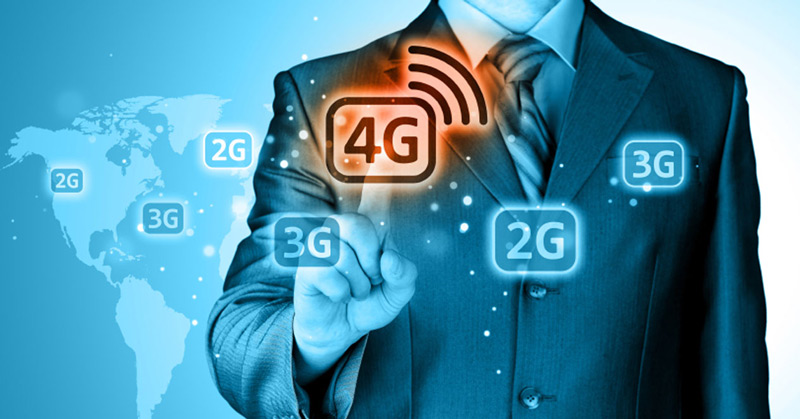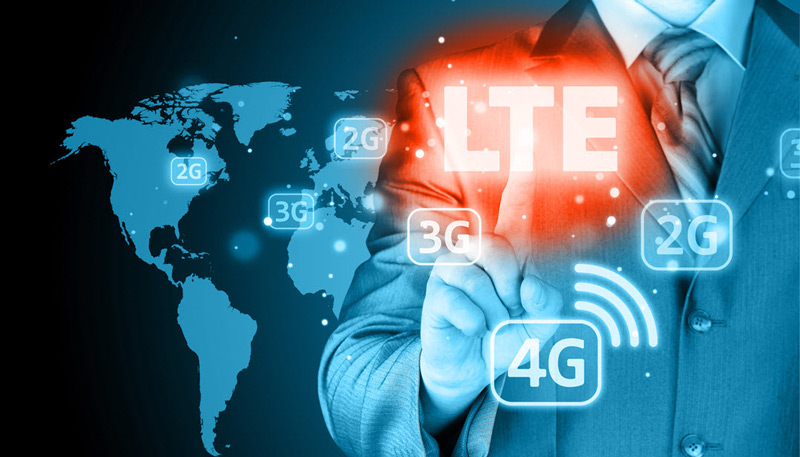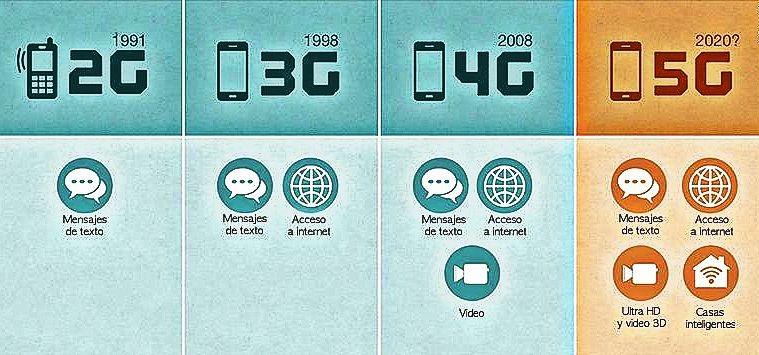
Index:
UPDATED ✅ Do you have doubts about which 4G and LTE network is better and want to know the differences and similarities between them? ⭐ ENTER HERE ⭐ and discover which one is better ✅ EASY and FAST ✅
Although it is true, telephones have been surpassing themselves at great speed and with it communication systems. At first these began to be used with a purpose, “to always be connected”, so they only fulfilled the function of making calls and sending text messages. But as time went on they incorporated a new tool, like a calculator, an alarm, a camera and so on, until they became almost an accessory and a fundamental element in us.
With the arrival of the digital age, new telecommunications were born, As is the case with 2G (GPRS) technology, it made it easier for people to navigate. At the time it was a great feat, as it handled a maximum speed of 54 KB/s, something that was considered fast at the time. After this, 3G emerged, which made it much easier to be connected to the Internet, it had a speed of 2 MB/s. Today we have 4G and soon a 5G.
They totally changed the meaning we had of these devices, since nowadays we all use smart equipment and depend on it and the type of connection to explore with our data. In this article below we will detail a little more about these networks. We will also give you a brief explanation of the standard for LTE communications, since many tend to confuse this terminology.
What is the 4G mobile connection and what features does it have?

Mainly you should know that this acronym is called “Fourth generation” and refers to a type of internet connection. It is a descendant of 2G and 3G. The main advantage that this has over the ones mentioned above is that it reaches much higher speeds, almost 20 times faster, approximately 100 MB on the move and up to 1 GB at rest. It is based on the “IP-protocol“, which means that it is a system and a network that works by the union between wired and wireless networks.
Keep in mind that 4G does not work alone. Well, for this to expand the bandwidth, it has to act with LTE technology, which thanks to its range can reach 300 Mbps. With this improvement you will no longer imagine uploading a photo to Instagram or Facebook quickly, since today, it is a reality to be able to carry out any type of activity, from surfing the internet, making video calls, researching and a long etcetera without inconvenience.
Among its characteristics we can point out:
- Compatibility of services with IMT and fixed networks.
- Compatibility with IPv6 protocol.
- high quality of services mobiles.
- roaming world.
- 100Mb/s speeds for high mobility and 1 Gb/s for low mobility.
What is the LTE connection and what features does it have?

The acronym LTE responds to the term in English “Long Term Evolution” what is Spanish means “Long Term Evolution”. This This is broadband technology for data transmission that gives access to the Internet on mobile devices. That is, it is a standard connection that is used for uploading and downloading network data.
This has been a controversial topic and it is due to the fact that many people tend to use it as a synonym for 4G, placing 4GLTE. Even many companies share it, one of them is Vodafone. But the truth is that they are not the same. Although, it could be said that LTE is an integrated technology to 4G, but let’s understand that it works with LTE Advance that reaches 1 GB/s speed.
It was born to meet the needs that users required by having a more efficient connection that would allow them to perform optimal searches. In turn, to create an easier and lower-cost standard and to safeguard the competitiveness that 3G can generate in the future.
In a nutshell, LTE is an evolution of standards GSM/UMTS, one of the technologies most used by 4G, this helps the latter to generate more speed. For this reason, the term should not be confused, since 4G is the fourth generation of networks in itself and LTE is a complementary technology.
Among its features are:
- Grants high bit rates with low latency and compatibility with other 3GPP technologies.
- Uses a ip based protocol, which grants an easier development.
- It is an improvement of old mobile network technology CDMA and GSM.
- The LTE network has a flexible frequency band between 1.4MHz and 2.6GHz.
- can work in many different frequency bands.
Main differences between 4G and LTE networks
As we have discussed throughout this article, many think that these are the same, taking advantage of the fact that both use a protocol that arose from the advancement of 3G by presenting higher speeds.
Let’s talk about this. One of the discrepancies that exists between these is the speed, For example, LTE offers a speed of approximately 170 Mbps, because it can vary depending on the antennas. The 4G grants a greater, as it reaches 1 Gbps. It should be noted that many classify LTE as a fourth generation technology, but the truth is that it is not. However, it is in its LTE-Advanced version.
To explain it in a simpler way, let’s see an example. Imagine that you want to download your favorite movie, these usually have a considerable weight, approximately 800 MB. With a device that has technology LTE would take 30 seconds or so. But if you have 4G or LTE – Advanced it would be just 10 seconds, at most. Of course it all depends on the country where you are. That is the difference between these two.
The next 5G technology to come, what advantages will we have?

We are all waiting for what news this technology can bring, beyond speed. If we start to analyze, all the previous ones have increased their resources, but Surely you have imagined how amazing it would be to have one even faster, it would be like flying on the internet. What has been commented on various news portals has undoubtedly given a lot to think about, because if it is as they say, it will have a promising future.
To learn a little more about it, we will name some advantages that could improve your user experience. Before we must mention that companies are currently designing their prototypes, so it could be fully operational by next year. It’s getting closer!
a complete revolution
One of the advantages is that this will be an independent network, that is, it will not be supported by the network systems that currently exist. So this is about a new technological ecosystem that goes beyond what we now know.
A smarter network
As we mentioned earlier this promises. It will become a much faster network with less latency. It is estimated that this generates speeds up to 40 times more than its successor, between 15 and 20 Gbs per second, just imagine downloading a movie with this, it will take you a couple of seconds. The best thing is that it will consume less battery, a very favorable and necessary point for devices.
More connected devices
You will be able to make the fact of having several devices connected with a direct and instant link to the internet a reality. With this you will not have problems when talking or browsing the web, on the contrary you will have a direct answer, since you will have a high capacity for sending information, maximum speed and minimum latency.
stable connection
Surely many times you had problems because you were in a place where there was almost no signal or because you were near some appliance that took coverage away from it. With this you will not have these inconveniences, the signal will arrive much stronger and clearer.
networks